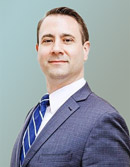Below you will find a real life case study of a couple who is looking for financial advice on how best to arrange their financial affairs. Their names and details have been changed to protect their identity. The Globe and Mail often seeks the advice of our Portfolio Manager & Senior Financial Planner, Matthew Ardrey, to review and analyze the situation and then provide his solutions to the participants.
![]()
Written by:
Special to The Globe and Mail
Published November 15, 2024
 Max and Peg's retirement spending goal is $120,000 a year after tax, which is more than they are spending now
Max and Peg's retirement spending goal is $120,000 a year after tax, which is more than they are spending now
Emergency heart surgery in his mid-50s has led Max and his wife, Peg, to rethink how much longer they want to keep working.
“The unexpected event was indeed the proverbial wake-up call,” Max writes in an e-mail. “It has given us the opportunity to explore a series of deep, existential questions, which in turn has ignited a desire for us to retire as soon as possible.”
He’ll be leaving behind a $238,000-a-year executive position and Peg a $142,000-a-year job in communications. Max is 56 years old, Peg is 58. They have no children.
Max and Peg share ownership of a Greater Toronto Area house with his parents. A while ago, they put a down payment on a prebuild condo in a nearby town, planning to retire there, but have since decided to sell it and move to the East Coast instead. They hope to retire next year.
Max has defined benefit pensions that together will pay $3,955 a month indexed to inflation. Peg, an American, has a 401k – similar to a registered retirement income fund (RRIF) – from which she plans to withdraw US$4,550 a month until it is exhausted. She also has a defined benefit plan with her current employer that will pay $500 a month indexed.
Their retirement spending goal is $120,000 a year after tax, more than they are spending now.
We asked Matthew Ardrey, a portfolio manager and certified financial planner at TriDelta Private Wealth in Toronto, to look at Max and Peg’s situation. Mr. Ardrey also holds the advanced registered financial planner (RFP) designation.
What the expert says
Peg and Max are planning to retire next year and move to the East Coast, Mr. Ardrey says. They have just bought a home there for $320,000, closing in January. They will be moving there next June.
“There are two other real estate transactions in the mix that need to be completed to make that happen, in addition to answering the most common question in retirement planning, ‘Will I have enough?’”
Max and Peg have a 50-per-cent interest in a property they share with Max’s parents. Their share is worth $700,000. They also have a condo that is under construction on which they have made a $155,000 down payment. The purchase price plus upgrades is $822,000.
The plan is to sell both of the Ontario properties, Mr. Ardrey says. “They feel it may take some time to get Max’s parents set up, so we assume that the Toronto property sale is delayed until mid-2026,” the planner says. “We further assume the condo is sold at cost in mid-2025. Both property sales are subject to a 5-per-cent selling fee.”
They have $205,000 in savings in Peg’s non-registered account that had been intended for the new condo but that will now be used for the East Coast house purchase. Peg and Max are adding $10,000 a month to this account. This, plus Max’s $62,000 in non-registered savings, will be enough to buy the house outright so they will not need a mortgage. They can replenish their savings as property sales are realized, the planner says.
Once retired, Max will have indexed pensions of $3,955 a month and Peg $500 a month. That’s in addition to their Canada Pension Plan and Old Age Security benefits. They plan to take CPP and OAS at the age of 65.
Max and Peg have investments of more than $2-million, the bulk of which are in Peg’s 401K plan, which has a value of about US$1-million or about $1.4-million in Canadian funds. She plans to draw US$4,550 a month from the account until it is exhausted.
In retirement, they plan to increase their spending from $7,100 a month excluding savings to $10,000 a month. “This increase accounts for additional travel back to Ontario and no longer sharing house expenses, along with some additional vacations,” the planner says.
Inflation is assumed to be 3 per cent and life expectancy for both Max and Peg the age of 95.
“Based on these assumptions, the plan just falls short of meeting their goals,” Mr. Ardrey says.
“To truly understand the risk in this plan, we need to move beyond the straight-line projection [where returns are the same every year] because life and investments rarely ever move in a straight line,” the planner says. To ensure the viability of this plan, he stress-tested it using a Monte Carlo simulation, which introduces randomness to a number of factors, including returns.
For a plan to be considered “likely to succeed,” it must have at least a 90-per-cent success rate, meaning at least 900 trials out of 1,000 succeed. If it is below 60 per cent, then it is considered “unlikely.” Between is “somewhat likely.”
Based on the Monte Carlo analysis, the plan only has a 46-per-cent chance of success, Mr. Ardrey says.
“Here we have a successful couple with a significant investment portfolio, a paid-off home and indexed pension plans. So how is it that they are not achieving retirement success?”
The main answer lies in their investments, he says. According to the information provided, 92 per cent of their investments are in cash. “Though having some cash for retirement is prudent, this ignores the risk of inflation eroding their asset base and spending power.”
They could improve their investment strategy by engaging the services of a portfolio manager with a focus on income generation, the planner says. “There are many solid investment options with strong yields and moderate overall growth that can offer low volatility risk while still maintaining a solid rate of return,” Mr. Ardrey says.
To illustrate how this would affect the outcome, he increases the expected return from 2.44 per cent to 5 per cent. In addition, he has Peg and Max delaying CPP and OAS benefits until the age of 70 to take advantage of the higher payouts. He assumes Max continues to contribute to his tax-free savings account (TFSA) throughout retirement. As a U.S. citizen, Peg cannot benefit from the TFSA’s tax advantage.
Should you start collecting CPP at age 65 or earlier? Our CPP calculator compares the benefits.
“These changes increase the Monte Carlo chance of success to 88 per cent, which is right on the threshold of likely to succeed,” he says. “Alternatively, they could cut their spending target by 17 per cent, or $20,000 per year [to $100,000 a year], and still reach Monte Carlo success even if they do not improve their investment return.”
After doing much right in their lives to build up their financial success, Max and Peg need to make some changes to their financial strategy, Mr. Ardrey says. “If they do so, they will be able to enjoy the retirement they worked so hard to earn.”
Client situation
The people: Max, 56, and Peg, 58.
The problem: Can they afford to retire to the East Coast next year with a retirement spending target of $120,000 a year after tax?
The plan: Take steps to improve their investment returns, failing which they may have to plan on spending less. Defer government benefits to the age of 70.
The payoff: Goals attained.
Monthly net income: $19,380.
Assets: Cash in bank $31,000; his RRSP $184,100; her RRSP $141,000; his non-registered $62,065; her non-registered $205,000; her 401k $1,400,000; his TFSA $103,860; share of residence $700,000; deposit on prebuild condo $150,000. Total: $2.9-million.
Estimated present value of their defined benefit pensions: $1,715,600. This is what someone with no pension would have to save to generate the same income.
Monthly outlays: Property tax $250; water, sewer, garbage $50; home insurance $80; electricity $80; heating $70; maintenance $200; garden $100; car insurance $300; other transportation $420; groceries $1,500; clothing $200; charity $200; vacation, travel $1,000; dining, drinks, entertainment $1,500; personal care $300; pets $500; subscriptions $100; drugstore $100; phones, TV, internet $160; TFSA $500. Total: $7,610.
Liabilities: None.
Want a free financial facelift? E-mail finfacelift@gmail.com.
Some details may be changed to protect the privacy of the persons profiled.

Matthew Ardrey
Portfolio Manager & Senior Financial Planner
matt@tridelta.ca
(416) 733-3292 x230
